Fannie Mae 2007 Annual Report Download - page 12
Download and view the complete annual report
Please find page 12 of the 2007 Fannie Mae annual report below. You can navigate through the pages in the report by either clicking on the pages listed below, or by using the keyword search tool below to find specific information within the annual report.-
 1
1 -
 2
2 -
 3
3 -
 4
4 -
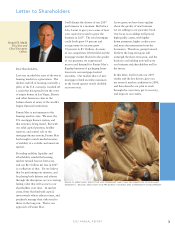 5
5 -
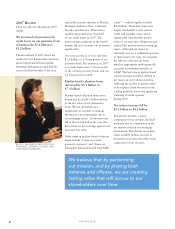 6
6 -
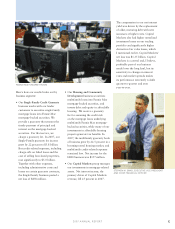 7
7 -
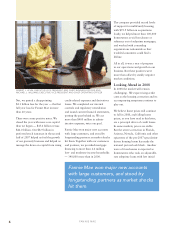 8
8 -
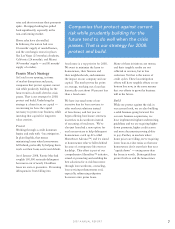 9
9 -
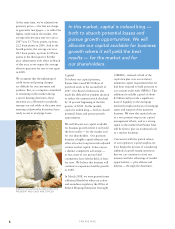 10
10 -
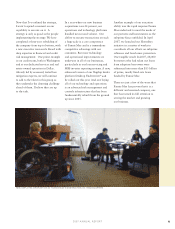 11
11 -
 12
12 -
 13
13 -
 14
14 -
 15
15 -
 16
16 -
 17
17 -
 18
18 -
 19
19 -
 20
20 -
 21
21 -
 22
22 -
 23
23 -
 24
24 -
 25
25 -
 26
26 -
 27
27 -
 28
28 -
 29
29 -
 30
30 -
 31
31 -
 32
32 -
 33
33 -
 34
34 -
 35
35 -
 36
36 -
 37
37 -
 38
38 -
 39
39 -
 40
40 -
 41
41 -
 42
42 -
 43
43 -
 44
44 -
 45
45 -
 46
46 -
 47
47 -
 48
48 -
 49
49 -
 50
50 -
 51
51 -
 52
52 -
 53
53 -
 54
54 -
 55
55 -
 56
56 -
 57
57 -
 58
58 -
 59
59 -
 60
60 -
 61
61 -
 62
62 -
 63
63 -
 64
64 -
 65
65 -
 66
66 -
 67
67 -
 68
68 -
 69
69 -
 70
70 -
 71
71 -
 72
72 -
 73
73 -
 74
74 -
 75
75 -
 76
76 -
 77
77 -
 78
78 -
 79
79 -
 80
80 -
 81
81 -
 82
82 -
 83
83 -
 84
84 -
 85
85 -
 86
86 -
 87
87 -
 88
88 -
 89
89 -
 90
90 -
 91
91 -
 92
92 -
 93
93 -
 94
94 -
 95
95 -
 96
96 -
 97
97 -
 98
98 -
 99
99 -
 100
100 -
 101
101 -
 102
102 -
 103
103 -
 104
104 -
 105
105 -
 106
106 -
 107
107 -
 108
108 -
 109
109 -
 110
110 -
 111
111 -
 112
112 -
 113
113 -
 114
114 -
 115
115 -
 116
116 -
 117
117 -
 118
118 -
 119
119 -
 120
120 -
 121
121 -
 122
122 -
 123
123 -
 124
124 -
 125
125 -
 126
126 -
 127
127 -
 128
128 -
 129
129 -
 130
130 -
 131
131 -
 132
132 -
 133
133 -
 134
134 -
 135
135 -
 136
136 -
 137
137 -
 138
138 -
 139
139 -
 140
140 -
 141
141 -
 142
142 -
 143
143 -
 144
144 -
 145
145 -
 146
146 -
 147
147 -
 148
148 -
 149
149 -
 150
150 -
 151
151 -
 152
152 -
 153
153 -
 154
154 -
 155
155 -
 156
156 -
 157
157 -
 158
158 -
 159
159 -
 160
160 -
 161
161 -
 162
162 -
 163
163 -
 164
164 -
 165
165 -
 166
166 -
 167
167 -
 168
168 -
 169
169 -
 170
170 -
 171
171 -
 172
172 -
 173
173 -
 174
174 -
 175
175 -
 176
176 -
 177
177 -
 178
178 -
 179
179 -
 180
180 -
 181
181 -
 182
182 -
 183
183 -
 184
184 -
 185
185 -
 186
186 -
 187
187 -
 188
188 -
 189
189 -
 190
190 -
 191
191 -
 192
192 -
 193
193 -
 194
194 -
 195
195 -
 196
196 -
 197
197 -
 198
198 -
 199
199 -
 200
200 -
 201
201 -
 202
202 -
 203
203 -
 204
204 -
 205
205 -
 206
206 -
 207
207 -
 208
208 -
 209
209 -
 210
210 -
 211
211 -
 212
212 -
 213
213 -
 214
214 -
 215
215 -
 216
216 -
 217
217 -
 218
218 -
 219
219 -
 220
220 -
 221
221 -
 222
222 -
 223
223 -
 224
224 -
 225
225 -
 226
226 -
 227
227 -
 228
228 -
 229
229 -
 230
230 -
 231
231 -
 232
232 -
 233
233 -
 234
234 -
 235
235 -
 236
236 -
 237
237 -
 238
238 -
 239
239 -
 240
240 -
 241
241 -
 242
242 -
 243
243 -
 244
244 -
 245
245 -
 246
246 -
 247
247 -
 248
248 -
 249
249 -
 250
250 -
 251
251 -
 252
252 -
 253
253 -
 254
254 -
 255
255 -
 256
256 -
 257
257 -
 258
258 -
 259
259 -
 260
260 -
 261
261 -
 262
262 -
 263
263 -
 264
264 -
 265
265 -
 266
266 -
 267
267 -
 268
268 -
 269
269 -
 270
270 -
 271
271 -
 272
272 -
 273
273 -
 274
274 -
 275
275 -
 276
276 -
 277
277 -
 278
278 -
 279
279 -
 280
280 -
 281
281 -
 282
282 -
 283
283 -
 284
284 -
 285
285 -
 286
286 -
 287
287 -
 288
288 -
 289
289 -
 290
290 -
 291
291 -
 292
292
 |
 |

10
FANNIE MAE
Conclusion:
Lessons of the Crisis
It’s safe to say that 2007-2008 will
go down in housing and fi nancial
history for all the wrong reasons.
Millions of homeowners got stuck in
the wrong mortgage. Speculators and
home fl ippers infl ated home prices
beyond logic and reason. And loose
underwriting funded by investors
looking for an easy return enabled the
whole sorry game.
Two lessons of the past few years are
already clear:
• We still need “stretch” lending.
The subprime boom-and-bust was a
disaster for many homeowners and
investors. But the nation still needs
innovative, affordable — though
sustainable — mortgage credit for
working families, even those without
perfect or traditional credit histories.
The mortgage and housing industry’s
future, including Fannie Mae’s
future, will depend on giving people
a fair chance at owning a home.
• We need mortgage reforms.
It’s too complicated, cumbersome
and expensive to get a mortgage
loan. And, as we now know, it has
been far too easy for rogue lenders to
prey upon unsophisticated borrowers
intimidated by the mortgage process.
At the very least, mortgage terms,
risks and costs should be simplifi ed
and more clearly spelled out — and
predatory lenders cast out. It is a
key priority for Fannie Mae to work
with the industry to strengthen
the process.
In other words, we need to focus on
homeownership, not just home buying.
Both of these lessons speak to a
basic truth that is a core value of our
company: If it is good for borrowers
in the long term, it is good for Fannie
Mae in the long term. For 70 years,
this has guided our company — out
of the Great Depression, and through
multiple booms, busts and cycles as
housing became a pillar of the U.S.
economy. And for the last 40 years as a
shareholder-owned company, this core
value has been a key ingredient in our
ability to generate competitive returns
for our shareholders — and in our
ability to promote affordable housing
for hundreds of millions of Americans.
It is this core value that will help
Fannie Mae through another
challenging year. To bridge us through
it, we are conserving our capital,
aggressively controlling our credit
losses, responding to the demands of a
stressed market and working with our
partners to keep people in their homes.
And all the while, we are investing in
the business for the future.
On behalf of our 5,700 employees,
thank you for being invested in
Fannie Mae, for your patience as we
work through this period, and for your
belief in America’s housing.
Sincerely,
Daniel H. Mudd
If it is good for borrowers in the long
term, it is good for Fannie Mae in the
long term. For 70 years, this has guided
our company.
